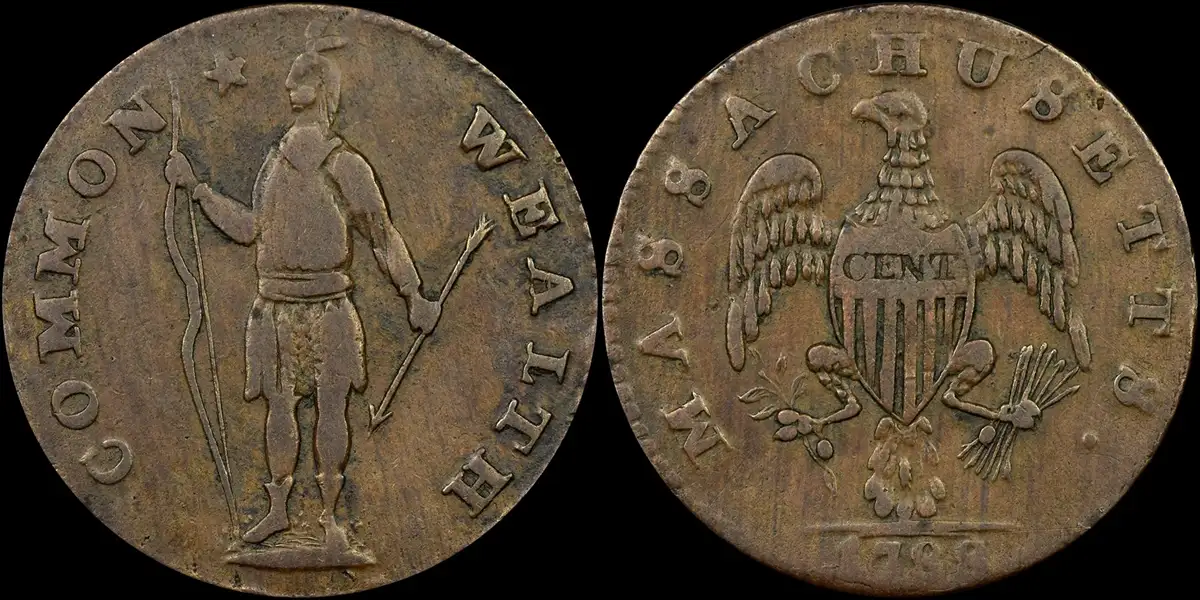NGC -
This coin's "third side" suggests it may have been made as a museum display piece.Not long after the American Revolution ended in 1783, several states gave private mints permission to strike coins under their authority. Mints struck coins in Massachusetts, Connecticut, New York, New Jersey and Vermont until 1788, when the Constitution of the United States, which granted Congress the power to coin money, was ratified.
These short-lived state issues are highly sought by many collectors because of their history and eclectic designs and denominations. As a result of this popularity, these coins have been targeted by counterfeiters for many years. Recently, NGC graders detected a spurious Massachusetts cent in a submission.
 Counterfeit 1788 Massachusetts Cent
Counterfeit 1788 Massachusetts CentAt first glance, this coin appeared to be genuine. There were no obvious issues on either the obverse or reverse. Unfortunately, a look at the coin's third side — its edge — revealed the true story.
 Edge of counterfeit 1788 Massachusetts cent
Edge of counterfeit 1788 Massachusetts centAs you can see from the image above, the edge has a very obvious seam in the center. Since Massachusetts cents were all die-struck, the fact that there is a seam is a telltale sign that this coin must be counterfeit. In this case, this coin is an electrotype, a type of fake that has been around for decades and commonly seen on early copper coins. The topic of electrotypes is covered in more detail here.
Given that the seam is so noticeable, this electrotype was likely not meant to deceive a collector. Instead, it could have been made to display in a museum in order to protect the original coin.
Many types of counterfeits can be quite deceptive, and electrotypes can be among the most difficult to detect. However, if you remember to closely study the coin's edge, electrotype counterfeits can often be easily discovered. Another way to detect electrotypes is to weigh the coin, since electrotypes usually do not have the correct weight.
Read More: Counterfeit Detection Series Check out 1788 Massachusetts Cents on ebay
Check out 1788 Massachusetts Cents on ebay.





















